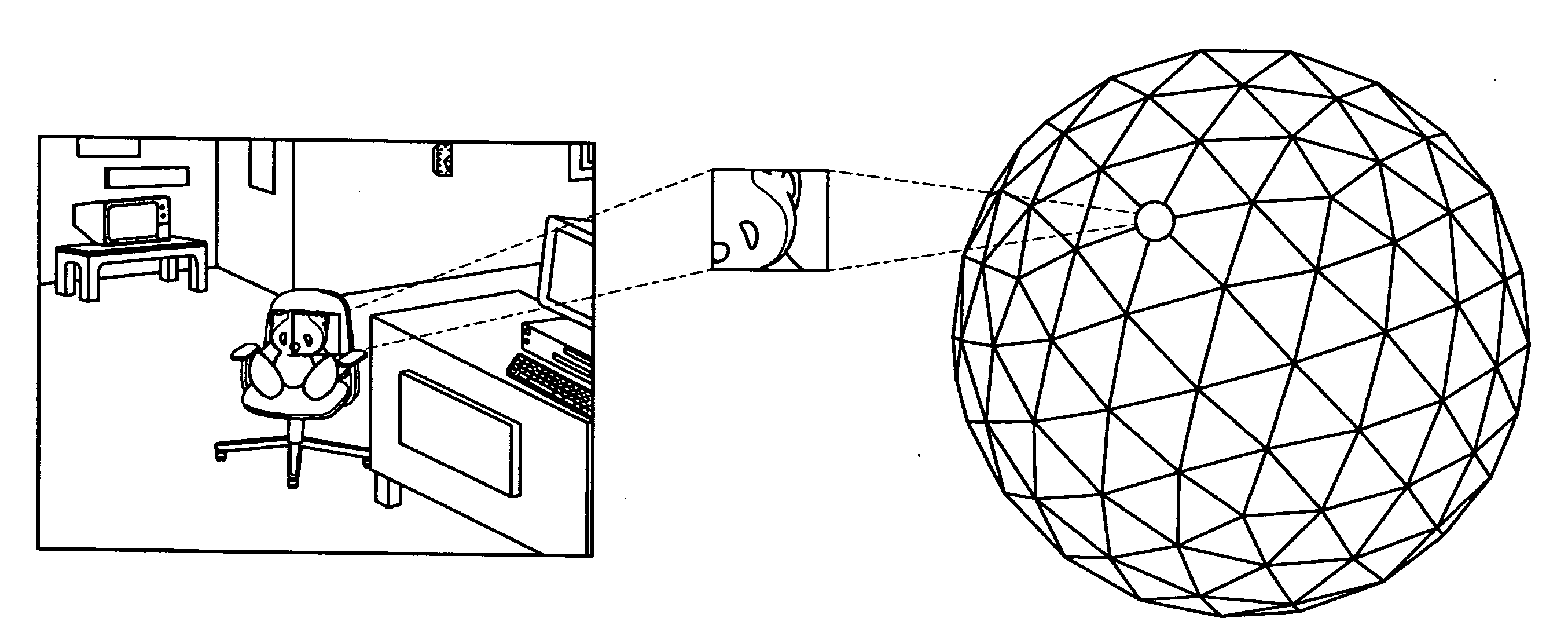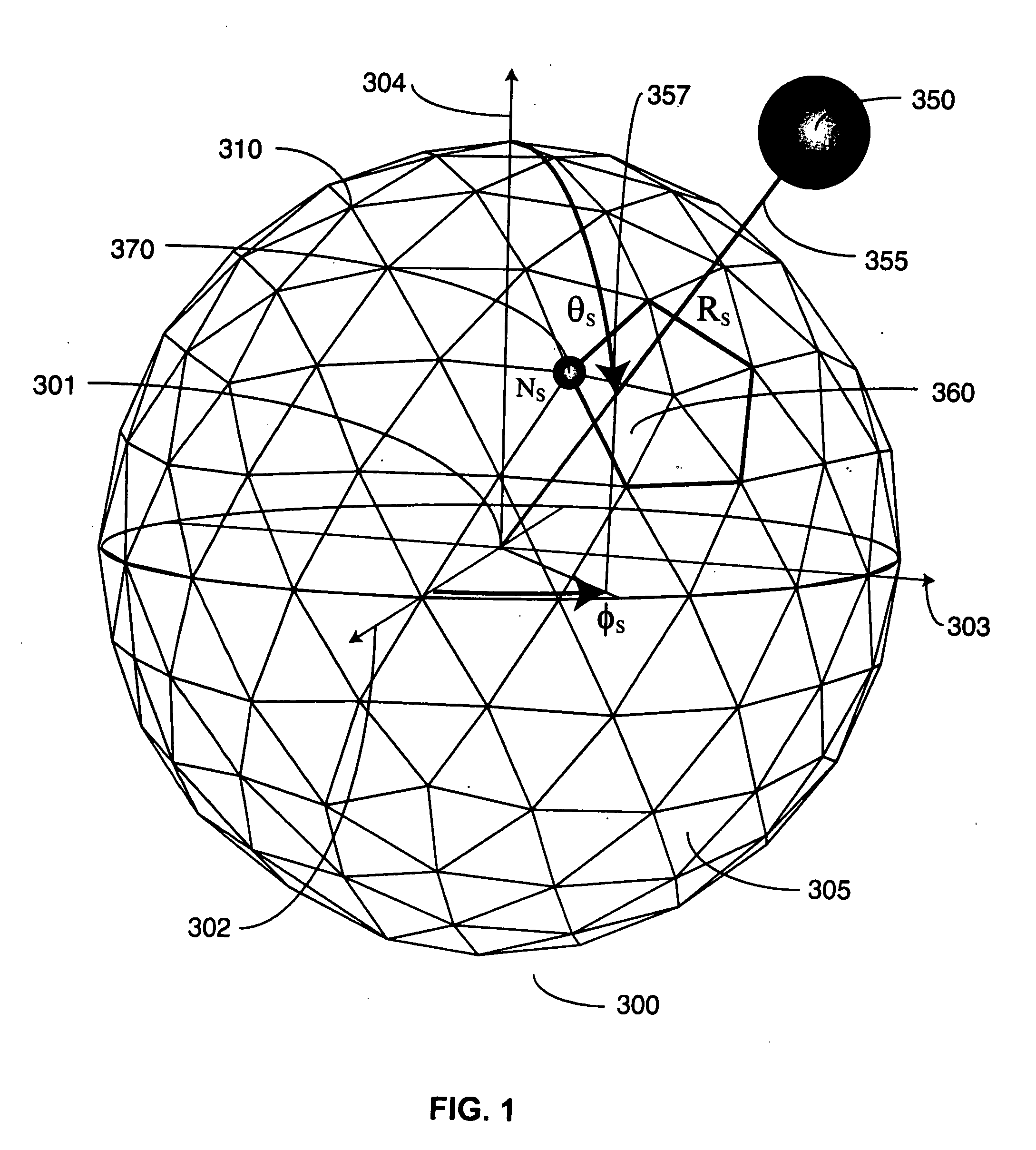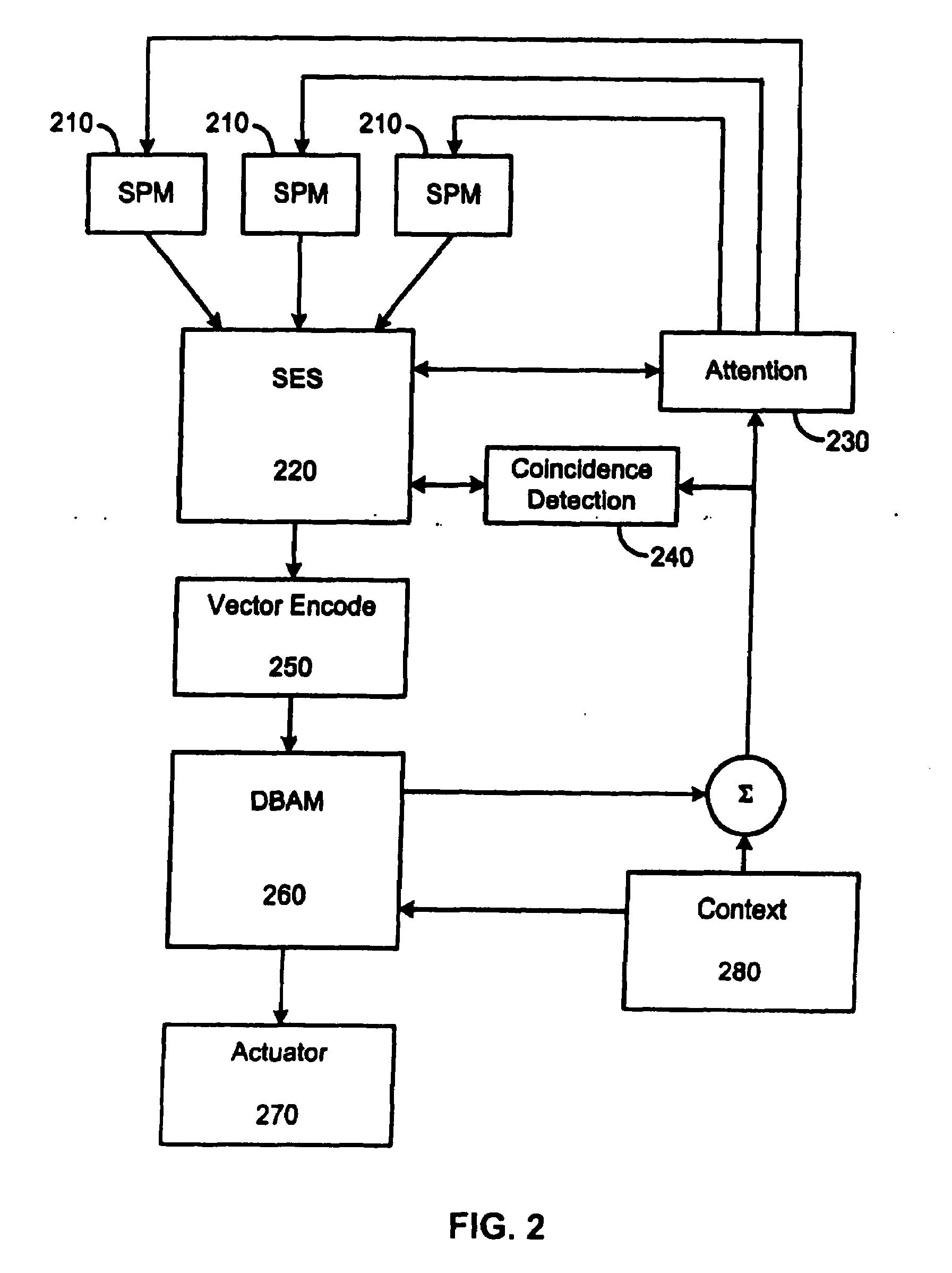System and method for image mapping and visual attention
a visual attention and image mapping technology, applied in the field of intelligent machines, can solve the problems of limited resolution, limited ability to rapidly process sensory information, and limited ability to adapt to the environment, and achieve the effect of higher activation valu
- Summary
- Abstract
- Description
- Claims
- Application Information
AI Technical Summary
Benefits of technology
Problems solved by technology
Method used
Image
Examples
Embodiment Construction
[0064]FIG. 2 is a schematic diagram showing the system architecture of one embodiment of the invention of the '707 patent. In FIG. 2, a sensory processing module (SPM) 210 provides information about the robot's environment to a Sensory Ego Sphere (SES) 220. The SES 220 functions as the short term memory of the robot and determines the current state of the robot from the information provided by the SPM 210 and determines a focus region based on the information provided by the SPMs 210, an attention agent 230, and a coincidence agent 240. A vector encoding agent 250 retrieves the data associated with the focus region from the SES 220 and maps the data to a state space region in a database associative memory (DBAM) 260.
[0065]If the robot is in an active mode, such as performing a task, the DBAM 260 activates a Spreading Activation Network (SAN) to plan a series of actions, also referred to as an active map, for the robot to perform in order to achieve the assigned goal. Each action is ...
PUM
 Login to View More
Login to View More Abstract
Description
Claims
Application Information
 Login to View More
Login to View More - R&D
- Intellectual Property
- Life Sciences
- Materials
- Tech Scout
- Unparalleled Data Quality
- Higher Quality Content
- 60% Fewer Hallucinations
Browse by: Latest US Patents, China's latest patents, Technical Efficacy Thesaurus, Application Domain, Technology Topic, Popular Technical Reports.
© 2025 PatSnap. All rights reserved.Legal|Privacy policy|Modern Slavery Act Transparency Statement|Sitemap|About US| Contact US: help@patsnap.com



